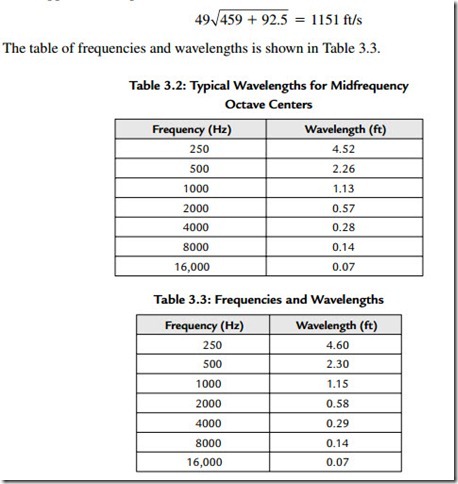Typical Wavelengths
Some typical wavelengths for midfrequency octave centers are shown in Table 3.2. Now suppose the temperature increases 20°F to 92.5°F.
Suppose we had “tuned” to the peak of a 1000-Hz standing wave in a room first at 72.5°F and then later at 92.5°F. The apparent frequency shift would be
where 1151 is the velocity (ft/s) at the temperature of measurement and 1.13 is the wavelength at the original temperature.
Related posts:
INDUSTRIAL CONTROL SYSTEM SIMULATION ROUTINES:SIMULATION AND CONTROL
Photodetectors
PNEUMATIC CONTROL FUNDAMENTALS:PNEUMATIC CONTROL COMBINATIONS
Operation of the DC Welder Generator
Signal-carrying switches:Chopper switches
POWER ELECTRONICS, RECTIFIERS, AND PULSE-WIDTH MODULATION INVERTERS:THE EFFECT OF INDUCTIVE LOADS ON...
Simplifying Logic Circuits:Vetch Diagrams
Transformer:Simplified Diagram
Amplifier Applications:Direct-coupled Amplifiers
PNEUMATIC CONTROL FUNDAMENTALS:SENSOR-CONTROLLER SYSTEMS
Measurement:The Phon
Other Digital Audio Devices:WAV Onward
SPLIT-PHASE MOTOR - POLYPHASE MOTOR STARTERS (Motor Starting Methods)
GENERATOR INSPECTION AND MAINTENANCE:ON-LOAD MAINTENANCE AND MONITORING

